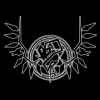This is a read-only snapshot of the ComputerCraft forums,
taken in April 2020.

how to scroll with scroll wheel in terminal
Started by Duster, 30 March 2016 - 08:15 PMPosted 30 March 2016 - 10:15 PM
i want to make it so i can scroll up in a terminal while my AI program is running - to see past results - so is there an easy way to do so
Posted 30 March 2016 - 11:19 PM
"Easy" is such a relative term.
You'll need to store the old text somewhere (eg a table), then rig up a system for printing different sets of table entries as you work the scroll bar. Things get more complex if the AI is outputting multiple lines per string, and more complex again if you want to be able to type back to it as well.
You'll need to store the old text somewhere (eg a table), then rig up a system for printing different sets of table entries as you work the scroll bar. Things get more complex if the AI is outputting multiple lines per string, and more complex again if you want to be able to type back to it as well.
Posted 31 March 2016 - 10:48 PM
cant i just use term.scroll(a)
a = os.pullevent("mouse_Scroll")
a = os.pullevent("mouse_Scroll")
Posted 31 March 2016 - 11:37 PM
"Easy" is such a relative term.
You'll need to store the old text somewhere (eg a table), then rig up a system for printing different sets of table entries as you work the scroll bar. Things get more complex if the AI is outputting multiple lines per string, and more complex again if you want to be able to type back to it as well.
well is there a way to rig os.pullevent("mouse_Scroll") to term.scroll so that your scroll wheel will scroll the text in screen?
Posted 31 March 2016 - 11:38 PM
cant i just use term.scroll(a)
a = os.pullevent("mouse_Scroll")
All term.scroll does is move all the text vertically. It would leave blank spaces at either the top or bottom depending on which direction you scrolled.
As Bomb said, you would need to store what each line had in a table, and display certain parts of the table at a time. Come to think of it, something similar actually happens in the edit program if you want to go look at that as an example. In that program it loads each line of a file to a table, and at the bottom of the script it has variables that keep track of what set of lines is being displayed from that table.
Edited on 31 March 2016 - 09:39 PM
Posted 31 March 2016 - 11:40 PM
soooooo no easy way. i would have to add tons more to the program
cant i just use term.scroll(a)
a = os.pullevent("mouse_Scroll")
All term.scroll does is move all the text vertically. It would leave blank spaces at either the top or bottom depending on which direction you scrolled.
As Bomb said, you would need to store what each line had in a table, and display certain parts of the table at a time. Come to think of it, something similar actually happens in the edit program if you want to go look at that as an example. In that program it loads each line of a file to a table, and at the bottom of the script it has variables that keep track of what set of lines is being displayed from that table.
Posted 31 March 2016 - 11:44 PM
soooooo no easy way. i would have to add tons more to the programcant i just use term.scroll(a)
a = os.pullevent("mouse_Scroll")
All term.scroll does is move all the text vertically. It would leave blank spaces at either the top or bottom depending on which direction you scrolled.
As Bomb said, you would need to store what each line had in a table, and display certain parts of the table at a time. Come to think of it, something similar actually happens in the edit program if you want to go look at that as an example. In that program it loads each line of a file to a table, and at the bottom of the script it has variables that keep track of what set of lines is being displayed from that table.
It could be done in just a few lines if you know what you are doing, and depending on what exactly your AI is doing. For example, if your AI only writes to the screen, and there is no user input it is extremely easy, and can probably be done in 10-15 lines at max. If it requires user input it is just a few more.
If you want help with the code, either try to do what we are suggesting and post any where you get stuck, or provide the code to your AI so we can give more program specific help.
Posted 31 March 2016 - 11:47 PM
ok so i have this program
how would i rig it up to scroll
how would i rig it up to scroll
local methods = peripheral.getMethods("back")
for k, v in pairs(methods) do
print(k .. " : " .. v)
end
while true do
term.scroll()
end
Posted 31 March 2016 - 11:56 PM
-snip
local methods = peripheral.getMethods("back")
local scrollBuffer = {}
local _,maxY = term.getSize() --# getting max screen size, so we only print to the screen
for k, v in pairs(methods) do
print(k .. " : " .. v)
table.insert(scrollBuffer,k.." : ".. v) --# storing all of the things printed to the screen into a table
end
local y = 0
while true do
local _, direction = os.pullEvent("mouse_scroll") --# listening for mouse_scroll events
if direction == 1 then --# direction 1 is when you scroll the wheel one way
if y < #scrollBuffer-maxY then --# don't want to be able to scroll outside of the range of the table
y=y+1
end
term.clear() --# clearing screen so we can print the new scrolled version
term.setCursorPos(1,1) --# setting to 1,1
for i = 1, maxY-1 do --# looping through the screen coords
if not scrollBuffer[i+y] then break end --# making sure the table location isnt nil
print(scrollBuffer[i+y]) --# printing the table entry, i+y is the table entry
end
term.write(scrollBuffer[i+y])
elseif direction == -1 then --# -1 is the only direction
if y~=0 then --# not going to explain anymore, as it all repeats from here
y=y-1
end
term.clear()
term.setCursorPos(1,1)
for i = 1, maxY-1 do
if not scrollBuffer[i+y] then break end
print(scrollBuffer[i+y])
end
term.write(scrollBuffer[i+y])
end
end
That is untested, but I think it should work. It might look long, but half of it is literally copy and pasted with a very slight change.
Edited on 31 March 2016 - 10:01 PM
Posted 31 March 2016 - 11:58 PM
could you pastebin it
-sniplocal methods = peripheral.getMethods("back") local scrollBuffer = {} local _,maxY = term.getSize() for k, v in pairs(methods) do print(k .. " : " .. v) table.insert(scrollBuffer,k.." : ".. v) end local y = 0 while true do local _, direction = os.pullEvent("mouse_scroll") if direction == 1 then if y < #scrollBuffer then y=y+1 end term.clear() term.setCursorPos(1,1) for i = 1, maxY-1 do if not scrollBuffer[i+y] then break end print(scrollBuffer[i+y]) end term.write(scrollBuffer[i+y]) elseif direction == -1 then if y~=0 then y=y-1 end term.clear() term.setCursorPos(1,1) for i = 1, maxY-1 do if not scrollBuffer[i+y] then break end print(scrollBuffer[i+y]) end term.write(scrollBuffer[i+y]) end end
That is untested, but I think it should work. It might look long, but half of it is literally copy and pasted with a very slight change.
Posted 01 April 2016 - 12:05 AM
Since I was posting it to pastebin decided to test it. For anyone looking at this topic in the future here is the fixed code:
pastebin link: http://pastebin.com/Ngq5R1YY
Edit:
Noticed I posted the version I used to test, which had removed the peripheral call due to me testing in a emulator. The code is now fixed, but the pastebin still has the testing version. It is really easy to fix what I added for testing, so I am not updating the pastebin.
local methods = peripheral.getMethods("back")
local scrollBuffer = {}
local _,maxY = term.getSize() --# getting max screen size, so we only print to the screen
for k, v in pairs(methods) do
print(k .. " : " .. v)
table.insert(scrollBuffer,k.." : ".. v) --# storing all of the things printed to the screen into a table
end
local y = #scrollBuffer
while true do
local _, direction = os.pullEvent("mouse_scroll") --# listening for mouse_scroll events
if direction == 1 then --# direction 1 is when you scroll the wheel one way
if y < #scrollBuffer-maxY then --# don't want to be able to scroll outside of the range of the table
y=y+1
end
term.clear() --# clearing screen so we can print the new scrolled version
term.setCursorPos(1,1) --# setting to 1,1
for i = 1, maxY-1 do --# looping through the screen coords
if not scrollBuffer[i+y] then break end --# making sure the table location isnt nil
print(scrollBuffer[i+y]) --# printing the table entry, i+y is the table entry
end
term.write(scrollBuffer[maxY+y])
elseif direction == -1 then --# -1 is the only direction
if y~=0 then --# not going to explain anymore, as it all repeats from here
y=y-1
end
term.clear()
term.setCursorPos(1,1)
for i = 1, maxY-1 do
if not scrollBuffer[i+y] then break end
print(scrollBuffer[i+y])
end
term.write(scrollBuffer[maxY+y])
end
end
pastebin link: http://pastebin.com/Ngq5R1YY
Edit:
Noticed I posted the version I used to test, which had removed the peripheral call due to me testing in a emulator. The code is now fixed, but the pastebin still has the testing version. It is really easy to fix what I added for testing, so I am not updating the pastebin.
Edited on 31 March 2016 - 10:12 PM
Posted 02 April 2016 - 01:00 AM
why does this not work on regular computers?Since I was posting it to pastebin decided to test it. For anyone looking at this topic in the future here is the fixed code:local methods = peripheral.getMethods("back") local scrollBuffer = {} local _,maxY = term.getSize() --# getting max screen size, so we only print to the screen for k, v in pairs(methods) do print(k .. " : " .. v) table.insert(scrollBuffer,k.." : ".. v) --# storing all of the things printed to the screen into a table end local y = #scrollBuffer while true do local _, direction = os.pullEvent("mouse_scroll") --# listening for mouse_scroll events if direction == 1 then --# direction 1 is when you scroll the wheel one way if y < #scrollBuffer-maxY then --# don't want to be able to scroll outside of the range of the table y=y+1 end term.clear() --# clearing screen so we can print the new scrolled version term.setCursorPos(1,1) --# setting to 1,1 for i = 1, maxY-1 do --# looping through the screen coords if not scrollBuffer[i+y] then break end --# making sure the table location isnt nil print(scrollBuffer[i+y]) --# printing the table entry, i+y is the table entry end term.write(scrollBuffer[maxY+y]) elseif direction == -1 then --# -1 is the only direction if y~=0 then --# not going to explain anymore, as it all repeats from here y=y-1 end term.clear() term.setCursorPos(1,1) for i = 1, maxY-1 do if not scrollBuffer[i+y] then break end print(scrollBuffer[i+y]) end term.write(scrollBuffer[maxY+y]) end end
pastebin link: http://pastebin.com/Ngq5R1YY
Edit:
Noticed I posted the version I used to test, which had removed the peripheral call due to me testing in a emulator. The code is now fixed, but the pastebin still has the testing version. It is really easy to fix what I added for testing, so I am not updating the pastebin.
Posted 02 April 2016 - 01:08 AM
Normal computer aren't compatible with colors and mouse, that include mouse scrolling.why does this not work on regular computers?


